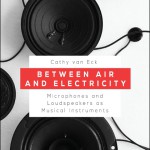 Gender, voice, language, and identity are four important notions for musical creation, for the shaping of a canon, and for the interactions in the field. All four notions are strongly contextual and carry an inherent sense of paradigm and otherness. Other and self are defined via orientation and history, expressed via voice, and confirmed in language.
Gender, voice, language, and identity are four important notions for musical creation, for the shaping of a canon, and for the interactions in the field. All four notions are strongly contextual and carry an inherent sense of paradigm and otherness. Other and self are defined via orientation and history, expressed via voice, and confirmed in language.
In this publication, these four core notions serve as a set of lenses permitting different perspectives on one another. However much the field of the sounding arts might pretend to be tangential to such affections, they provide important grounds for musical creation.
Some twenty artists, including myself, have created a variety of outputs – as different in form, strategies, approach, and language, as they are rooted in a variety of sub-fields within the sounding arts.
GROUNDS FOR POSSIBLE MUSIC is edited by Julia Eckhardt/Q-02 (Brussels), published by Errant Bodies Press (Berlin).
 We live under constant visual stimulation these days. But for most of us our ears are still our primary sense organ to engage with the world around us: for orientation, to detect possible threats; either create a feeling of safety, comfort andŌĆ” even belonging. I have always been curious about our emotional responses to sound and our tendency to – regardless of the degree of abstraction – create meaning and eventually a whole (imaginary) narrative around it.
We live under constant visual stimulation these days. But for most of us our ears are still our primary sense organ to engage with the world around us: for orientation, to detect possible threats; either create a feeling of safety, comfort andŌĆ” even belonging. I have always been curious about our emotional responses to sound and our tendency to – regardless of the degree of abstraction – create meaning and eventually a whole (imaginary) narrative around it.
 We live under constant visual stimulation these days. But for most of us our ears are still our primary sense organ to engage with the world around us: for orientation, to detect possible threats; either create a feeling of safety, comfort andŌĆ” even belonging. I have always been curious about our emotional responses to sound and our tendency to – regardless of the degree of abstraction – create meaning and eventually a whole (imaginary) narrative around it.
We live under constant visual stimulation these days. But for most of us our ears are still our primary sense organ to engage with the world around us: for orientation, to detect possible threats; either create a feeling of safety, comfort andŌĆ” even belonging. I have always been curious about our emotional responses to sound and our tendency to – regardless of the degree of abstraction – create meaning and eventually a whole (imaginary) narrative around it.



